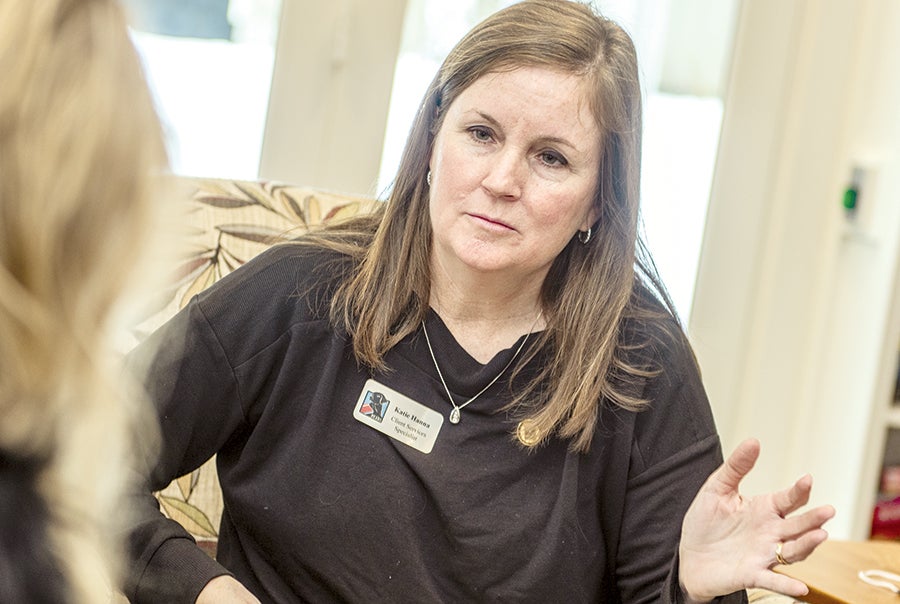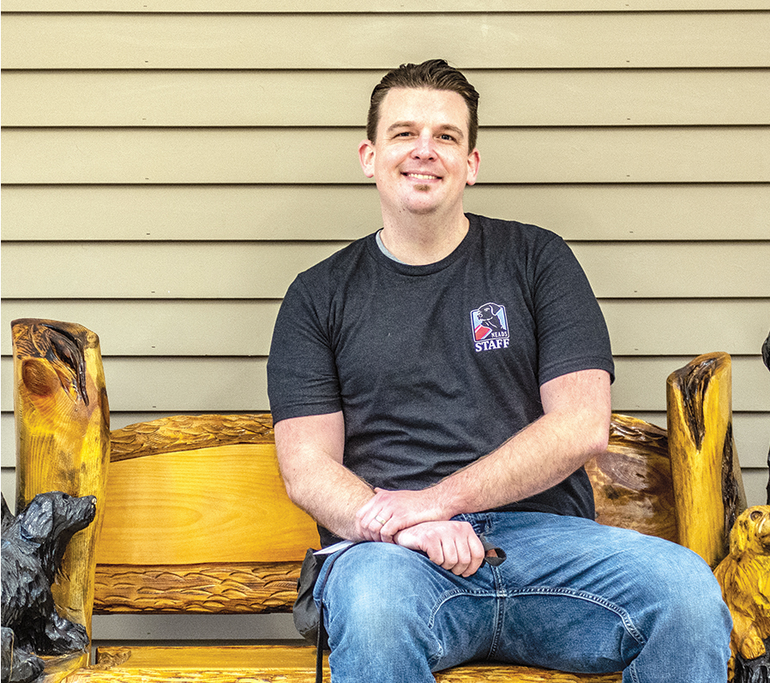Cliff Comptois of West Brookfield was just 18 years old when he signed up for the Army National Guard and later joined the Air Force National Guard, serving both branches in Strategic and Tactical Air Command. Little did Comptois know this was the start of a long military career, one that would end unexpectedly.

Comptois left the military and was enjoying civilian life when 9/11 inspired him to rejoin the Army National Guard, where he served as a heavy wheel mechanic. While working at Fort Bragg in North Carolina, Comptois and his unit were carrying heavy equipment and machinery. After the work was done, Comptois went to bed. The next morning when he woke up and put pressure on his foot, he experienced a level of pain that he had never endured before.
“It was like a million volts just shot right through my body, from my toes to the tips of my hair, and I almost fell through like a plate glass window, which was in my bedroom,” Comptois said.
After emergency back surgery, Comptois was medically discharged after 17 years of service in 2006.
While his military career ended, the crippling back pain still persisted with Comptois barely able to walk, even with the assistance of a cane.
The idea of a service dog never crossed Comptois’ mind, instead he and his wife were just looking for a pet when a family member suggested the couple reach out to NEADS World Class service dogs in Princeton.
Founded in 1976, NEADS breeds, raisies, and trains service dogs for people with physical disabilities, hearing disabilities, autism/developmental disabilities, and veterans suffering from post traumatic stress disorder or service-related injuries.
Even with the referral, Comptois went into NEADS looking for a puppy who was a furloughed favorite, meaning a dog who had failed NEADS’ strict training standards and could not be a certified service dog, but a dog who would still make a great family pet.
As he walked through the door shaikly using his cane and wearing his old Army field jacket, Kathy Foreman, director of canine development at NEADS, stopped Comptois and told him he qualified for a veteran service dog, which meant he could have a fully trained service dog at no cost due to a federal funding.
“I was at the point then where I said ‘No, no, there’s other people out there that are more deserving, more needful to have a service dog than I’. And, you know, Kathy goes, ‘Don’t worry, there’ll be plenty of dogs for other people as well’. And, you know, still, it took me two years to come to my senses and say, ‘Okay, I think I’m in need enough to get a service dog,’” Comptois said.
Leko, a black labrador, came into the picture and changed Comptois’ life by retrieving everyday items such as his cane and keys and guiding him as he walked, but, more importantly, she provided a sense of constant comfort and security.
Bred and trained for service

NEADS Veterans Service Representative Katie Hanna is a retired U.S. Army lieutenant colonel and operations officer who worked with the U.S. Army surgeon general, reserve affairs directorate. Through her extensive work with the Army Medical Corps. and now her role at NEADS, Hanna has seen firsthand the transformative impact that service dogs have on the lives of injured veterans.
NEADS is the oldest service dog program in New England, using industry standards in its breeding and training programs. Every NEADS dog is able to perform 50 to 60 tasks, such as alerting their hearing impaired owners to alarms, pushing handicap buttons on doors, retrieving necessary items, opening refrigerators, and calming their owners down if they have PTSD flashbacks in public or night
terrors in bed.
“The dog is able to kind of give them their life back. And we just look at the dogs as that bridge, that community bridge, back to independence and of being able to do things on their own,” Hanna said.
Labradors are selected at NEADS for their temperament and intellect. Once they are bred and selected for training, the puppies undergo 18-24 months of training before they are ready to be matched with a client. NEADS does in-depth interviews with its clients to make sure they are matched with a dog that not only suits their needs, but their lifestyles, hobbies, families, and home environments. The process takes time, but it ensures both the client and the dog have a partnership benefiting both parties.

“The dog is just like many things in the military, you know, your right arm, your battle buddy, the person that is there that supports you in all different situations. That dog becomes that part of the partnership,” Hanna said.
It typically costs $45,000 to breed, raise, and train each dog. However, NEADS asks clients who are not part of the veteran program to raise $8,000 toward these fees but gives them two years to complete fundraising so finances are not a deterrent.
NEADS Trainer Tyler Gribi completed a required two-year apprenticeship program before becoming an official trainer in February 2021. The thorough instruction of the trainers ensures they can properly train dogs to perform a wide variety of tasks on command without getting distracted by the world around them.
One of the dogs Gribi trains is a 20-month-old dog named Porter, who is on track to be a service dog for an individual with a military service disability.
Porter was selected for physical disability training because his height allows him to be nearly as tall as a wheelchair or walker, so he can give items to physically disabled individuals without them reaching down.
Gribi loves working with dogs and helping clients live their best lives. While his work is highly rewarding, Gribi would like the public to remember service dogs are working and petting and distracting them from assisting their owner could result in that person’s injury.
Comptois himself once fell in a local Walmart after a group of young shoppers distracted Leko, pulling her from his side while he was kneeling and making him fall to the ground as a result.
“They are basically medical equipment for that person. You wouldn’t go up and touch a wheelchair because that is intrusive,” Gribi said.
In fact, the U.S. Department Veterans Affairs officially registers service dogs as medical devices.
Finding normalcy
After years of denial, Comptois is glad he reached out for a service dog. Comptois said veterans are conditioned to be selfless and do not reach out for the services they need. Comptois now acts as an advocate, telling fellow veterans all about the independence and normalcy NEADS service dogs can provide.
Not only does Leko help him with daily routines, but she acts like a beacon to let other people know he is there, so he does not get hit or jostled by people in public. She is fiercely loyal and protective of Comptois.
“You know, I get excited like that talking about her. I get a little teary, because it’s a soft spot in my heart,” he said.
Leko is 9 years old and slowing down in her ability to do tasks, but even as she nears retirement, Comptois will keep her as a beloved part of his family while he considers getting a younger NEADS service dog.
“Not only [is NEADS] helpful in the beginning about getting your dog, but all through the dog’s career of serving you, they are right there behind you if you need anything,” Comptois said.

